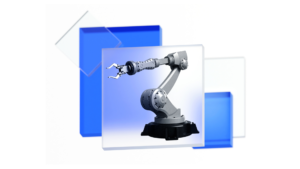Enormous untapped potential
The application of legal rules is often standardized — can it therefore also be automated?
Many lawyers will answer: “Absolutely not! The law is far too complex for that”. In my opinion, a different legal guideline would be the right answer to this question, namely “it depends”. All too often, it is human factors, rather than the law itself, that stand in the way of automation.
One problem lies in the fact that most lawyers think they know exactly how to do things right and therefore do not need a computer to do things for them.
Today’s law firms do not encourage innovation or automation.
While automation may create added value for them, implementing it requires standardization and automation itself. Not only do individuals have to spend time on this, but the right structures are also needed to make this possible.
The widespread assumption that lawyers make no mistakes entails a belief that any technical solution can only be worse than its human counterpart.
This phenomenon can often be observed in the field of document recognition. If a provider of software with a deep learning function promises that their software would recognize 90% of relevant documents, it is dismissed as unsuitable. Because an associate could do this better. The fact that the associate can become overtired or inattentive, which could lead to inaccuracy, is not considered.
A certain degree of skepticism about technical innovation is necessary. But human capabilities should not be overestimated.
ROI and applications vary
Another problem lies in the overall structure of law firms, where the lawyer who has the highest hourly account at the end of the month gets a bonus. For in-house counsel, on the other hand, the number of hours or cases is less important to their monthly earnings.
Nevertheless, some in-house lawyers may be afraid that their job will be in jeopardy if some of their client’s questions are answered by machines. This perspective is shortsighted.
If standardized tasks are solved by machines, then the in-house counsel could address issues that are strategically and economically more important to the company.
Automation in the legal field is often worthwhile, but benefits depend on the specific area and topical focus. Two mistakes should always be avoided:
1. Lack of a cost-benefit analysis.
Not every investment in technology makes economic sense. Before committing to a new project, a cost-benefit analysis should be carried out. Ideally, if a particular process is accelerated by automation, and hours are freed up for a large number of employees as a result, the costs of implementing that automation will more than pay off.
2. Focusing too much on the technology and losing sight of the people and processes it needs to serve.
Technology alone is not the solution. A well-known methodology for organization digital transformation adopted by the legal tech community is “People, Processes, Technology”. The order of these words is not a coincidence; technology should be the last step and always fit harmoniously with people and processes.
First and foremost, we need people who understand and can work with the technology in question. We also need end-users to be able to interact with it. Lastly, we need it to integrate seamlessly with the required processes.
Many software products have failed because the technology did not deliver on the aforementioned points.
Automation and law: Perfect match with challenges
Two brief examples highlight scenarios in which automation could offer added value:
1. A new document is created from a technical template using a form consisting of several modules. Alternatively, in the case of a non-legal user, the same document is created with the help of technical assistance. If a (complex) contract is to be created, this can be done more easily using an automated process. For the legal department, it means less work; for the sales department, it accelerates the process to contract conclusion.
2. Guidelines are often drafted by legal departments and are often very complex and confusing for non-legal stakeholders. Interactive interfaces — available immediately for everyone within a company— can greatly speed up the process, which may have to be completed hundreds of times in the group. This also makes it possible to shed more light on individual points.
Automation and law are more closely related than one would suspect. To achieve added value, prejudices must be eliminated and necessary structures created. We are only at the beginning of recognizing the various application areas and improving and refining the existing solutions.
This text is an excerpt from the article by Dr. Nicolai Behr, “Automationen im Recht – Warum wir es nicht angehen”, Rethinking Law (REL1300577), pp. 68 ‑ 71.








